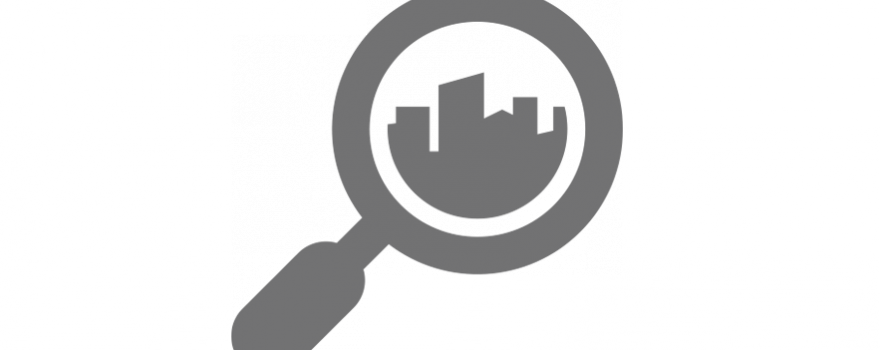
The debate about the Project MZ-RMBH is at full power, but some terms may be new to you. Because of that, in this edition, we organized a list with the main concept that are part of the discussion. Check it out to see if you are up to date!
Land Use – Defined by specific legislation that follows or come from the Municipal Master Plan. It is an instrument of territorial ordering that establishes where and how to occupy the territory. The laws of land use and occupation interfere directly in the citizens’ life when establishing parameters for how and what kind of construction can be developed in the regions of a municipality. In this way, it guides the formation of residential neighborhoods, industrial regions, parks or green areas, which produce different effects on the city and demand specific cares. The definition of land use parameters in the Zones of Metropolitan Interest will be the work for the next stage of the Macrozoning – important tool for a supra-municipal territorial ordering, with proper observation to the local characteristics and recognizing the metropolitan interest to some specific locals over the territory.
Structuring Nodes – The structuring nodes are regions surrounding the main highways of the RMBH. Structured from the road web of the state and national connection, they constitute inductive linear axes of growth and present development opportunity for industrial activities and logistic – product storage and distribution, among other usage. Grand industrial areas that follow a freeway are example of a structuring node, as these areas influence directly the metropolitan development of the cities and regions in which they are.
LUMEs – The Places of Metropolitan Urbanity – LUME, according to the PDDI, are meeting points to be constructed, spread over the RMBH in a decentralized and supra-municipal way. They aim to strengthen and amplify the diverse web of social actors established during the metropolitan processes of planning; to stimulate and promote the information exchange; the communication of relevant themes for planning; and the capacitation and shared management of metropolitan directives.
Macrozoning – A planning instrument that aims to organize a given territory from the comprehension of its existing or desirable different realities, vocations, tendencies, traditions, uses and occupations to stimulate. The Macrozoning of the RMBH looks for ordering the metropolitan territory in a way to achieve a greater equality among the many parts composing the RMBH, and it starts from technical studies and collective reflections, promoted by the participative process, for identifying the Areas and Zones of Metropolitan Interest.
Rurality – Not only by services, industries and mining is composed the urban life of the RMBH. Cultural characteristics of the population are also present in the region and contribute to the permanence of spaces dedicated to agricultural and livestock activities in the third largest Brazilian metropolis. Besides, the proximity with a well-qualified infrastructure encourages the commercialization of the rural production with less closer regions. This vocation to produce food shall also be understood and taken into consideration so the project can really transmit the different metropolitan pulses.
Zoning Conflicts – Inter-municipal bordering or internal places where a given zoning, comparing to the nearer zonings or between municipal legislations of the same municipality, has rules of land use with opposed objectives. During the work developed by municipal technicians involved with the Macrozoning of the RMBH, the team found conflicts among the actual legislations, being they conflicted among municipalities, as well as internally. There are even some cases when the same area has one function in the Master Plan and another in the Law of Land Use. However, besides not being the aim of the Macrozoning to overrule the municipal legislation, this is another challenge brought to the attention of the team as a subject in need of a shared solution for the region.
Centralities – Urban poles of great attraction of people and activities of high capacities to bring together diverse types of land use and occupation – residential, retail, services, cultural, leisure, and even industrial – are dynamic centers that tend to structure and organize the municipal and regional spaces and also in other levels. The PDDI highlighted the need of territorial restructuration because of the overconcentration of services, opportunities and structures in the capital. The Macrozoning also focus on the creation and enhancement of various centralities in the RMBH according to the local characteristics. The expectations for these centralities are to build a space with diverse economic activities, these combined with residential and green areas, and spaces of citizenship. The centralities can and shall be articulated, looking for a web structure as well as better metropolitan fulfillment and balance.
Green-Blue Trama – Multifunctional spaces capable of recognizing and preserving the panoramic and environmental attribution integrated with the metropolitan urban life. The Trama appears along the hills and valleys capable of constituting a bridge between areas of cultural and socio-environmental relevance. It has been a while since the debate about environmental preservation ceased to be a movement secluded of the people’s everyday life. The areas defined as part of the Green-Blue Trama are structuring regions of the metropolitan territory, wherein there is a need to think the water usage and flora preservation in harmony with other activities, for they have crucial importance to the maintenance of the natural resources of the metropolis. Supra-municipal, the Trama opposes to the territorial division and shall influence the local land use, ensuring an articulation among leisure, tourism and urban agriculture activities, as well as considering housing, retail and services when passing already occupied areas, focusing on the environmental preservation.

